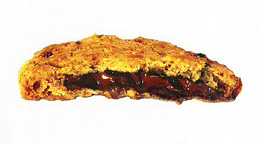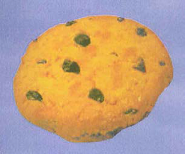Who: Biscuits Poult SAS and the Office for Harmonisation in the Internal Market (“OHIM”)
Where: European Union General Court (the “General Court”)
When: 9 September 2014
Law stated as at: 7 October 2014
What happened:
The General Court recently upheld an OHIM Board of Appeal decision and ruled that a registered Community design representing a cookie was invalid under the Community Designs Regulation (6/2002/EC) because it lacked individual character.
In 2009, Biscuits Poult obtained the following Community design registration for its cookie design:


Banketbakkerij Merba BV (“Merba”) successfully invalidated this registration. They applied to OHIM for a declaration of invalidity. Merba relied on a number of prior cookie designs (the “Earlier Designs”) and argued that the registration was not novel, had no individual character and that its appearance was dictated by its technical function.
Merba’s application was initially rejected by the Cancellation Division of OHIM. However, following an appeal by Merba, the Board of Appeal ruled that the registration was invalid for lack of individual character and cited the following reasons for this decision:
(i) the layer of filling inside the cookie could not be taken into consideration for the assessment of the individual character of the registration because it did not remain visible during “normal use” of the product;
(ii) the outer appearance of the registration was identical to three of the Earlier Designs; and
(iii) the registration did not produce on the informed user who regularly consumes that type of cookie a different overall impression from that produced by the Earlier Designs, taking into account the broad margin of design freedom for this type of product.
Biscuits Poult appealed to the General Court arguing that:
(i) the Board of Appeal was wrong to disregard the internal appearance (i.e. the chocolate filling). By doing so, it failed to consider the differences between the registration and the Earlier Designs which gave the registration its individual character;
(ii) the chocolate filling does become visible during “normal use” of the cookie; and
(iii) taken together, all of the registration’s characteristics (including its texture and the number of chocolate chips on its golden surface) gave it a different individual character to the Earlier Designs.
General Court’s decision
The General Court dismissed Biscuits Poult’s appeal and upheld the Board of Appeal’s finding that the registration was invalid due to lack of individual character. The General Court held that:
(iv) the Board of Appeal was correct to disregard the chocolate filling when assessing the individual character of the registration because this characteristic only becomes visible when the cookie is broken. It does not, therefore, relate to the appearance of the cookie;
(v) a cookie is not a complex product because “it is not composed of multiple components which can be replaced by permitting disassembly and re-assembly”. As such, the concept of “normal use” was not relevant in this case; and
(vi) given the designer’s considerable freedom, the differences between the registration and the Earlier Designs were not sufficient to produce a different overall impression on the informed user.
Why this matters:
This is an important reminder that, although product parts can be protected by Community design registrations, to obtain this protection they must be visible to the end user in normal use, replaceable, and able to be assembled and disassembled, as well as having the key requirements of novelty and individual character.
It is also an important reminder that the more freedom a designer has, the greater the need for the design to differ from similar earlier products in order for it to have individual character. These design registration criteria are important because, whilst seeking registration of a Community design is a straightforward process since OHIM does not examine the application for novelty and individual character, the validity of a granted design can be subsequently challenged by a third party.








